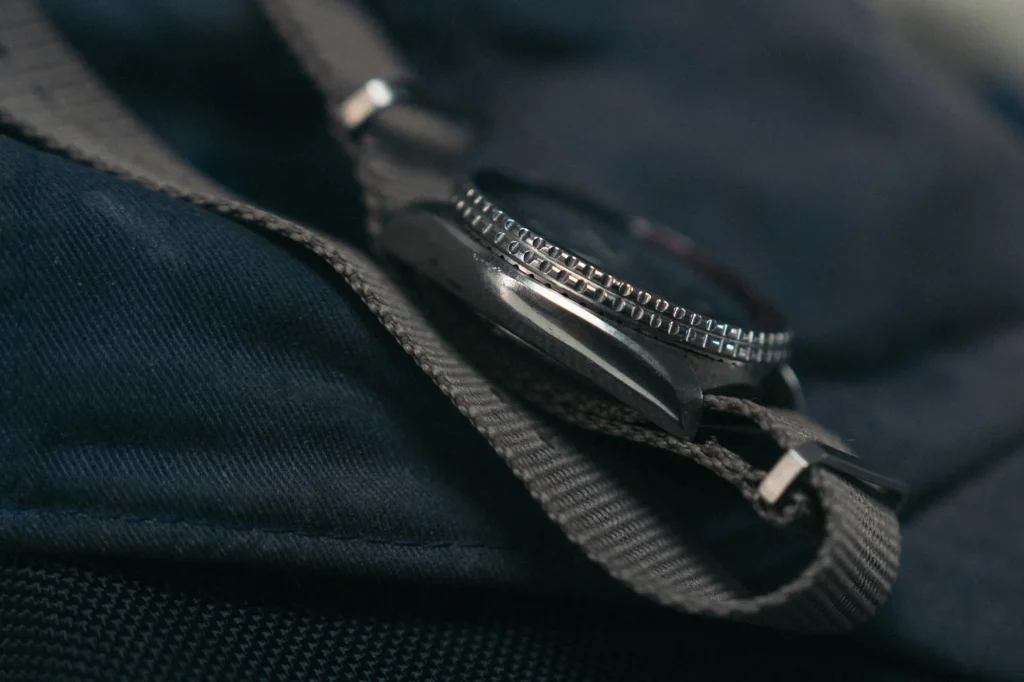One of the most taken for granted elements of a great watch design is the case. It is responsible for shaping the initial aesthetic of the watch as a whole, while also ensuring ergonomic stability. It’s a big ask, and when it works, it’s something you barely notice. In discussing some great neo-vintage cases with Luc Albert (@lucalbert on Instagram), it occurred to me that modern cases have become a bit lazy in some ways. Yes, there are some truly great modern examples out there, but I’m talking about the standard workhorse type of case. The kind that are meant to blend into the background, not get in the way, but still tie everything together effectively.

We are largely fixated on a set of three numbers by which we judge a case these days: the diameter, the thickness, and the lug to lug length. While these are important, they capture a limited view of the overall experience of a case. Considerations such as the curvature, lug thickness, and lug shape, caseback profile, as well as the weight, can each play a large role in the success of a case on the wrist and in use. All this to say nothing of the design qualities, which can also make a big difference.

It’s easy to get caught up on these numbers, but what it boils down to is wearability, which will obviously vary with every wrist. One of the cases often brought up when thinking about cases and measurements is the Omega Speedmaster Moonwatch Professional. It measures 42mm in diameter, but it wears a bit smaller than that in practice thanks to the twisted lug, asymmetrical design that contains that diameter in a tidy footprint on the wrist. This is an example of a great case that’s comfortable in its own shoes, so to speak. It’s not small, but it’s wearable. This is a case that’s been around since the ‘60s, and it’s very much worth appreciating to this day.

When I consider a certain type of sport watch from the neo-vintage era, especially chronograph watches, there’s a quality that’s been lost in modern translation, and it comes to the character of the case design. The Fortis Official Cosmonaut’s Chronograph, first released in 1994 is a great example worth consideration. We’ll have a full video on this one coming soon, but this case is worth special attention for how it handles itself. While this watch entered life with a Lemania 5100, the original 38mm case did receive a Valjoux 7750 prior to transitioning to the 42mm B42. The original OCC offers a case that doesn’t quite jive with the modern perception of a case fitted with a 7750. It’s not big and clunky, not overly thick, and is overall relatively graceful in its proportions.

This is a case that manages some elegance despite its use of a rather large movement. The 38mm diameter case measures 46mm from lug to lug, and hides the 14mm thickness in a well considered rounded caseback. On my wrist, it looks and feels more like 12mm. It’s a similar story with the Zenith Rainbow Flyback, also from the ‘90s. It’s a similar vibe to getting in a car from the ‘90s, even one as basic as a Honda Civic or Acura Integra, which have a surprising simplicity to them compared to their modern counterparts.

There’s good reason for this, as safety standards have evolved, and tech has bloated to the point that these cars are generally shadows of their former selves. More creature comforts, no doubt, but that simple connection with the driver has been largely diluted. With watches, there are no safety standards mandating larger cases. There is nothing holding brands back from producing cases as they had been in this era. Only trends and cost saving measures prohibit such a move.

The cases we have today may be a remnant of the size trends we experienced a decade ago. Sure, sizes have come back to reasonable territory, but everything else about them carries the vestiges of that period with bigger lugs, higher case walls, less elegant casebacks, etc. In short, cases these days generally feel a bit ham-fisted, and a bit of character has been lost as a result. An obvious example is the move by Rolex in their five digit references, to their six digit references, and that is broadly applicable. That’s not to say that there aren’t any great cases being produced these days, but certainly at the scale I’d like to see.

The bottom line is that a watch, and its case in particular, are more than the sum of the numbers you see on a press release. There are qualities that aren’t quite as easy to put your finger on, but you know when you experience it. It’s a subtle art that’s slowly being lost to time in large part, and it’s something that I think we need to start holding brands accountable to.


Comments
5 responses to “A Great Watch Case is More than Its Measurements”
Interesting article, thank you. The diver in the last picture has an intriguing profile but I haven’t been able to identify it. What model is it?
Hi! The last image is of a Zenith Rainbow Flyback – you can see more of it here: https://thedeeptrack.com/retro-review-the-zenith-rainbow-flyback-chronograph/
Thanks! Now I can match the picture to the reference in the article.
Great article, Blake! I’m sure you’ve heard people talking up the Christopher Ward Light Catcher case and I gotta say I agree. It’s an amazing design that makes the watch look and feel like a communion wafer on wrist.
Love the Light Catcher case! That’s a great example of a modern brand elevating an often taken for granted element of a watch.